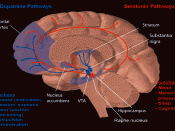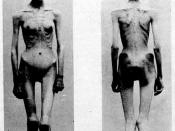" When she was fourteen, a modeling agency said that her face was two fat. It was a death sentence." (Toronto Sun, 1994)
Sheena Carpenter died in November 1993. She was found on the kitchen floor of her apartment by her mother. She was twenty-two years old. . . and weighed only fifty pounds. Sheena was just one of the alarming numbers of young women who become obsessed with the shape and size of their bodies, and suffer harmful, or in this case, fatal effects from eating disorders. At any given time, almost one out of every two women is on some sort of a diet, and this statistic is apparently reflected the revenues of the diet industry, currently a $33 billion a year industry. It should be noted that this estimate does not include profits generated by exercise or workout programs, gyms, health clubs, or cosmetic surgery.
A recent national survey in the US reveled that the majority of women, when asked what would make them happiest, choose thinness over all other choices, even such thing as job promotion, romance, prestige and power.
In fact, more women feared becoming fat, then feared dying. These statistics revel an alarming social problem that is reaching epic proportions.
Although the topic of eating disorders has gained a larger audience within the last decade, the number of cases of eating disorders continues to rise at a resounding rate. Today many scientists are looking into possible causes for the onset of an eating disorder. The most prevalent and influencing factor is the media and society's view. They act as a controlling presence for susceptible individuals. " The socioculture pressure on today's adolescent and young women to be thin and attractive also play an important role in the development of eating disorders. Thinness in today's...


